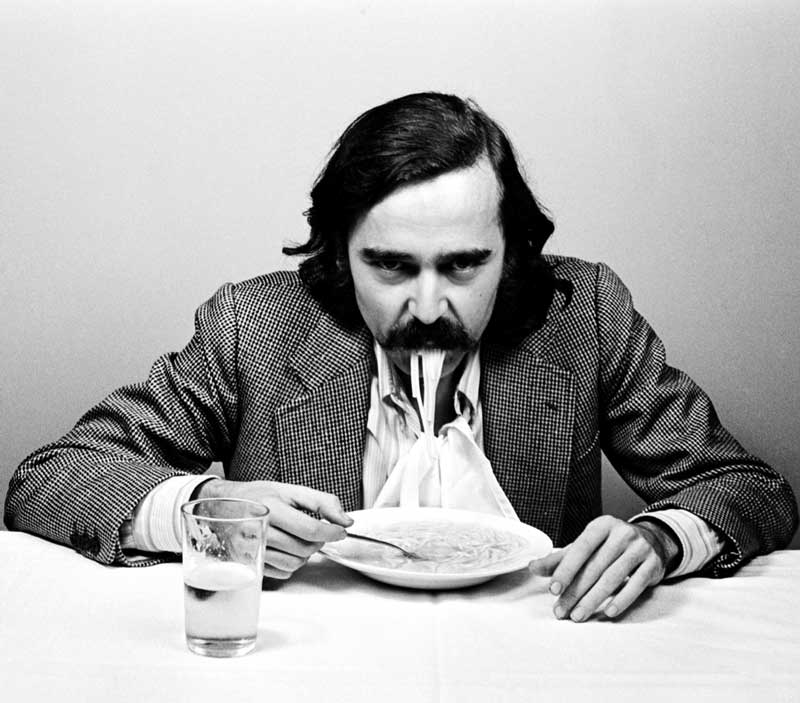The exhibition "La gauche qui rit" sees the light again thanks to the UPF Barcelona School of Management, which recovers part of Colita's photographs censored during Franco's regime with a new exhibition, available at Balmes 132 until September.

- "Who is the Gauche Divine" is an exhibition that collects part of Colita's photographs shown at the Aixelà hall in 1971.
- Joan Manel Serrat, Maria del Mar Bonet or Jorge Herralde are some of the characters captured through Colita's lenses.
- The exhibition, available at UPF-BSM until September, will tour the three campuses of the Pompeu Fabra University
The exhibition "La gauche qui rit" sees the light again thanks to the UPF Barcelona School of Management, which recovers part of Colita's photographs censored during Franco's regime with a new exhibition. "Who is the Gauche Divine?", available at the Balmes 132 building until September, shows part of the images in which Colita portrayed the people who made up the intellectual life of Barcelona during the last years of Franco's dictatorship.
Exclusive interview with Colita, here
"In the 1970s, Barcelona was the color of a dirty pigeon." This is how Colita defines the time and the city where she started in photography and where she has become one of the most emblematic photographers of our times. "It was a port city, sad... but there were small meeting places, like trenches, where we hid a group of anti-Francoists and culture addicts," she explains.
Joan Manuel Serrat, Maria del Mar Bonet, Eugenio Trias, Jorge Herralde or Oscar Tusquets are some of the "divines" captured through Colita's lens. People who "tried to make a living from culture and who, over time, have become famous in their profession".
"Their photographs show us how they were then, when perhaps they were not even what they have become," reflects the curator of the exhibition and head of the UPF-BSM Culture program, Mathilde Brodu. "She approaches them through a funny look, far from archetypes and staging," she says, and adds, "she shows us their friends, far from the fame that would end up turning them into icons."
The Gauche Divine is a milestone in Spain's recent history of what it meant to resist Franco's regime and censorship.
The concept of Gauche Divine was promoted by the chronicler Joan de Segarra with the aim of bringing together the group of people who made up the intellectual life of Barcelona. "When we saw that the concept was becoming so important, we decided to write down on a napkin who we really were, the Gauche Divine," says Colita. A list from which the exhibition "La gauche qui rit" was born, a term that plays on the name of the processed cheese brand "La vache qui rit".
With censorship, the growth"We intended to have a party in the Aixelà room with the aim of hanging our friends on the wall and giving them the photographs," admits the photographer. But the exhibition, which was supposed to last two days, ran up against Franco's censorship. "They took the 'gauche' very seriously," says Colita, who, beyond the anecdote, admits that the concept "caught on".
Today, the "Gauche Divine" is a "milestone in the recent history of Spain, an intellectual emblem of what it meant to resist Francoism and censorship, what it meant to create despite repression or to seek outside the established limits the conditions for the work of art," says Manel Jiménez, vice rector of Educational Transformation, Communication and Culture at the UPF.
There will never again occur a phenomenon like that of the Gauche Divine because, I hope, there will not be another dictator to unite the world of culture.
"The Gauche Divine phenomenon has never stopped. I'm 80 years old and am still talking about it," expresses the photographer, who attributes it to the "fun of the protagonists". "What people want is to laugh and share a sense of humor, that's why this group was so successful," she notes.
However, the photographer -who says she is very happy with the explosion of photography thanks to smartphones- affirms that this phenomenon will not happen again, since "there will never again, I hope, be another dictator that unites the world of culture".
"There is little romanticism left in our profession, and those that are left are being killed in some war," he denounces, and regrets that, nowadays, everything related to culture "is complicated." "You have to work hard to get far and still be able to hang your friends on the wall when you're 80 years old," she concludes.

Free admission in the hall of the UPF Barcelona School of Management (Calle Balmes 132-134)
April-September 2021
Curated by: Mathilde Brodu
Original idea: Francesc Polop
Graphic design: Francesc Polop
Edition and translation: Ruth Pérez Castro
Production: UPF Barcelona School of Management
Collaborators: colitafotografia.com, CRAI Library UPF
Images: Colita Fotografía © Archive